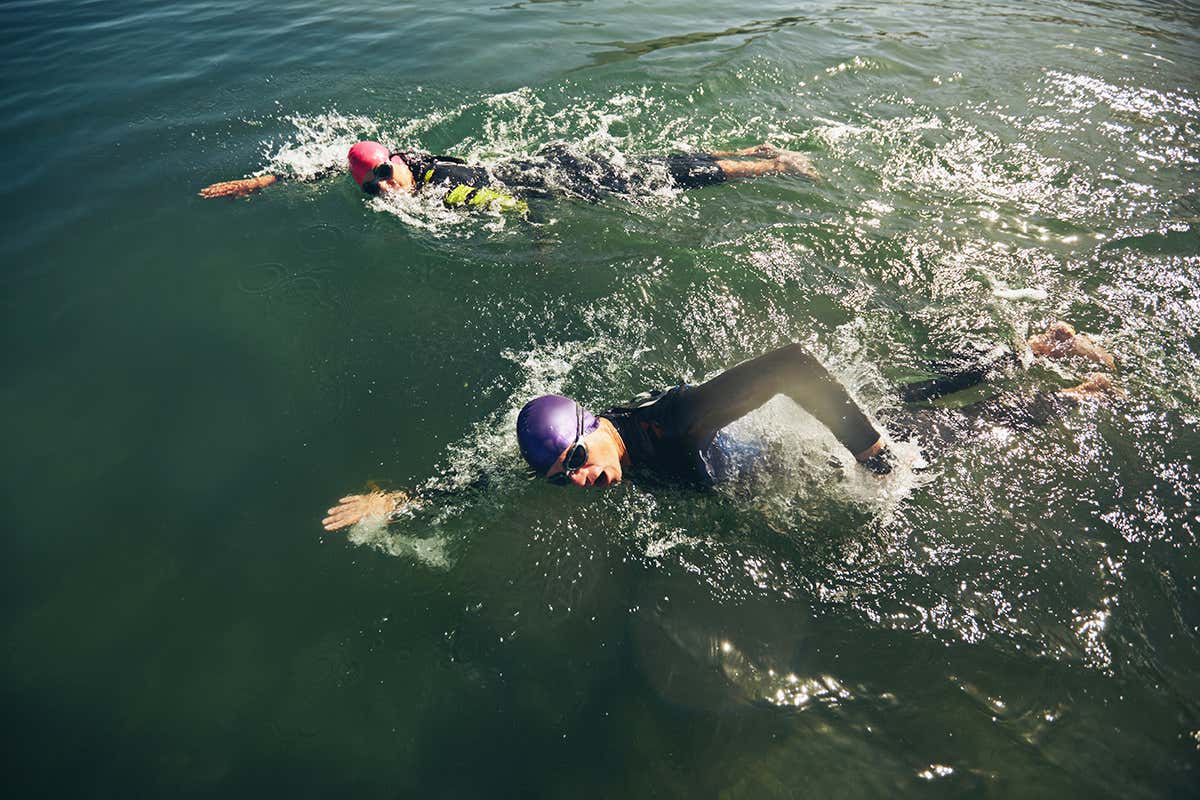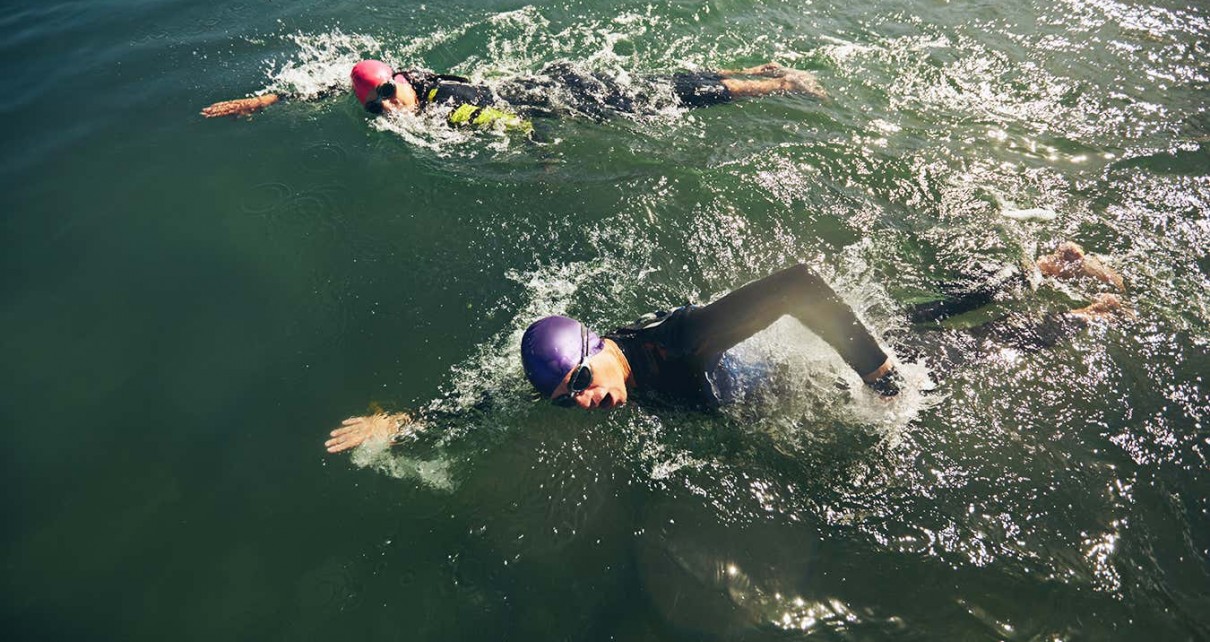[ad_1]

Swimming in certain positions relative to other swimmers can offer an advantage
Shutterstock/Jacob Lund
Swimming with other swimmers can be more efficient than swimming alone. Swimmers in open waters, like in marathon swimming events at the Olympic games, can dramatically reduce drag between themselves and the water by assuming just the right position relative to the other swimmers.
Birds can fly further when in formation, the endurance of many fish increases when they swim in schools and some cyclists save energy when they cycle in groups. Remi Carmigniani at École des Ponts ParisTech in France and his colleagues examined whether swimmers harness a similar advantage when swimming in groups. The work is part of an effort to aid French athletes in training for the Paris 2024 Olympic and Paralympic Games.
The researchers used an 80-metre-long water channel and two plastic mannequins that resembled swimmers with their arms held tight to their bodies. Each was equipped with a sensor for drag forces, or friction forces between the mannequin and water. Carmigniani and his colleagues put the two mannequins in different configurations, including one behind the other and the two side by side, then ran water through the channel at several speeds and collected drag data.
From these measurements and computer simulations of the experiments, they found that a swimmer can reduce drag on their body up to 40 per cent by swimming behind a fellow swimmer. If a swimmer found themselves having to swim side by side with a competitor, swimming at the level of the other’s hip reduced their drag by about 30 per cent. Carmigniani says that the latter effect comes from swimmers “surfing” the waves created by their neighbours.
Baptiste Bolon, also at École des Ponts ParisTech and a member of the research team, says athletes the researchers spoke to had experienced that swimming exactly parallel to another person or passing them at their side is tiring and difficult. That is consistent with what the study found, he says.
Jean-Claude Chatard at Jean Monnet University in France, who was not involved with the experiment, says that it is complementary to past studies where human swimmers’ physiological responses, like oxygen uptake and heart rate, were measured across different swimming configurations. He says that mannequins are clearly not the same as swimmers as they are more passive, but some of the experiment’s precise findings – such as how when swimming behind another swimmer in a lane, it is better to leave some distance – could be useful for athletes.
The researchers now want to focus on determining the best, or least tiring, route for one swimmer moving ahead of another by passing them from the side. Bolon says that they will also test configurations with more than two swimmers, as is the case in actual races.
Topics:
[ad_2]
Source link




